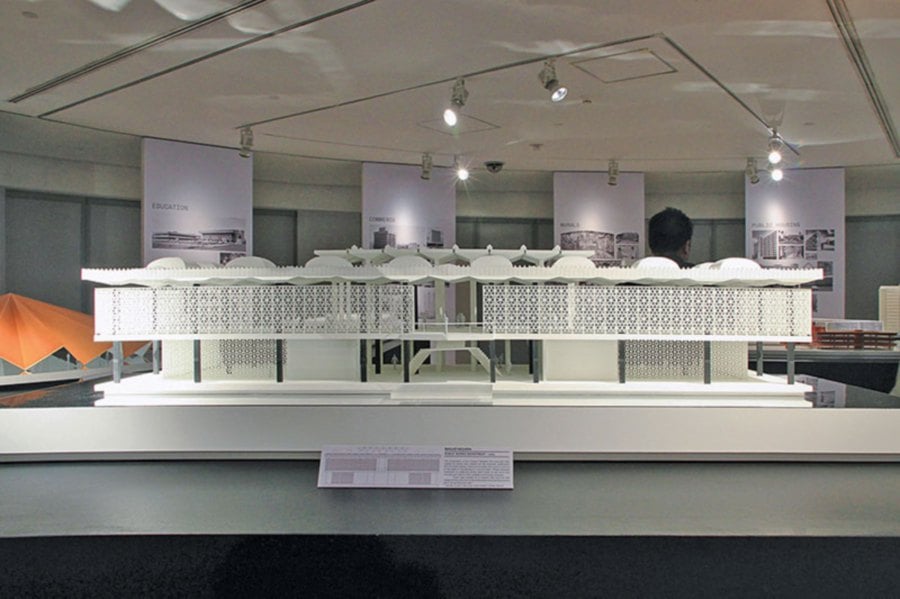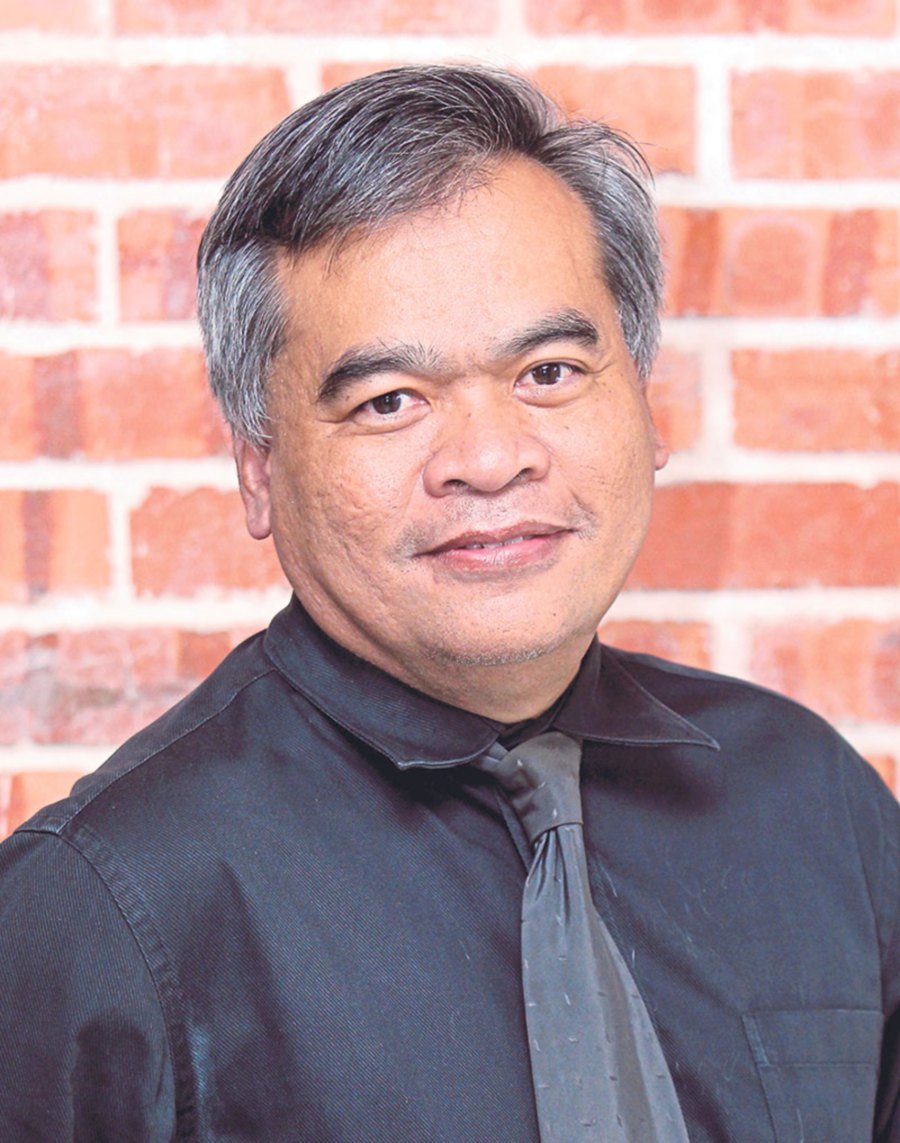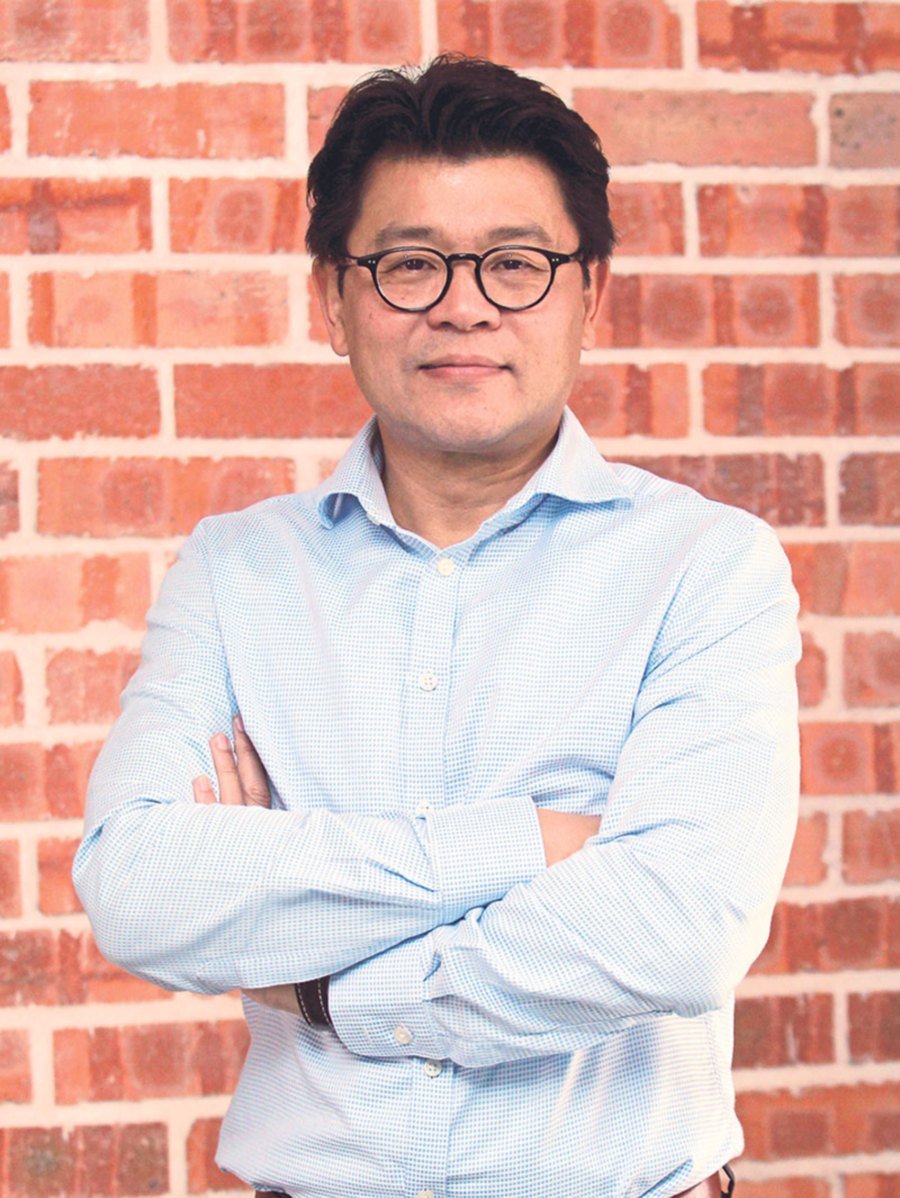
In 1963, Baharuddin Kassim, a young, and enthusiastic architect and with the Public Works Department of Malaysia was asked to submit his architectural design for a mosque. The nation’s new Prime Minister, Tunku Abdul Rahman Putra Al-Haj, wanted this mosque to be both a place of worship and symbol of the country’s newly-found independence and unity.
This rookie, who spent most of his teenage years marvelling at mosques, could barely believe the moment his life-long dream came true: On August 27, 1965 the national mosque was officially opened to all Malaysians, built with the blueprint of his winning design. Fifty-two years on, Masjid Negara remains one of Malaysia’s most iconic structures, and Baharuddin Kassim, one of the country’s pioneers in the field of architecture.
“My director-general, a British man had faith in me, that I, a local could design this,” recalls Datuk Baharuddin Kassim, now well into his 80s. “But even at that time, no one trusted local architects. They always preferred foreign architects. And this is what we see happening today,” he sighs.

Malaysia may have achieved her independence six decades ago, but as Datuk Baharuddin and a generation of architects point out, we may still be bound to the shackles of the colonial mind-set.
STUCK IN SHACKLES
“Our country is still plagued by the colonial mind-set,” remarks Azim A. Aziz, one of three directors of architectural firm ATSA Architects. His statement is met with an overwhelming nod by five of his comrades, all of whom hail from award-winning Malaysian architectural firms. They are ATSA’s fellow founder Zulqaisar Hamidin, Che Wan Ahmad Faizal of Chewan Architects, Hud Abu Bakar of RSP Architects, Veritas’ Lilian Tay and Malaysia’s pioneer architect, Datuk Baharuddin Kassim. “There’s always this thinking that our home-grown architects are not as good as our foreign counterparts,” he adds.

We’re sitting in Pertubuhan Arkitek Malaysia’s (PAM) new home nestled in the quiet neighbourhood of Bangsar to discuss the future of Malaysian architects and an industry that we know so little about. “Since Datuk Baharuddin’s time in the 1960s, the profession has been grooming generations of Malaysian architects to design and build our own buildings. Now that we have reached the stage where we’re ready to compete, our good architects are being overlooked,” confides Azim.
A pensive look on his face, Zulqaisar offers an example of a commercial building in KL which ATSA tendered a bid for. He recounts an incident where his team had much trouble convincing the developers to use different materials for the structure. “But when John C. Portman came down and presented the same materials, semua jalan (all goes),” recalls Zulqaisar, referring to the American architect and developer.
The issue, explains Azim, is not if a Malaysian architect is less qualified, it’s the lack of fair opportunities. As Tay elaborates, many tenders especially those for Government-Linked Companies (GLC’s) are only open to well-known foreign architectural firms. “It’s unfortunate that we have this colonial mind-set hanging above us. Going local also has an important economic perspective,” argues Tay.

SENSE AND DOLLARS
A big chunk of the economic element Tay talks about lies in the recent Trans-Pacific Partnership Agreement (TPPA) regulations. The Bill passed in 2014 by parliament allows for foreign architects to set up firms in Malaysia and owning up to 30 per cent of the company.
Unfortunately, many do not comply with the regulations set by Malaysia’s governing bodies. “Many foreign architects here are not respecting the 30 per cent figure,” divulges Tay, who says that most actually own 100 per cent and get young local architects to just be their in-name director.
The task of enforcing the regulation, she admits, is a tough one considering they have cleverly worked around the system — for example, some set up offices in China and Hong Kong, subbing out work or disguising themselves under different company names. “With foreign architects, most of the work is done outside the country. While regulations state they need local counterparts, most of the home-grown talents are reduced to submitting architects who have to do all the back-end work,” reveals Azim.
The influx of foreign architects, coupled with the colonial mind-set, continues Tay, is only robbing talented local architects from the opportunity to showcase their worth. “Decades ago, we were not that worried because we only had the best people come to the country, people like top architect Ceasar Pelli and so on.” The Argentinian architect was entrusted with designing the Petronas Twin Towers in 1996. The big international names didn’t bother with smaller projects, but Tay reveals, this is no longer the case. “They’re also competing with us through cost. They set up offices in China, which means that the fee is reduced. And they set up shops here now. Yes there are locals working for them but the money isn’t trickling back into our economy.”
For Tay, who has been a Principle at local firm Veritas for more than two decades, going local is also about being responsible for the growth of the community you serve. “When we have family day at Veritas and you see over 300 of our staff and their loved ones there, it just makes you realise the gravity of your duty to help 300 people put food on their tables.”

BEYOND BORDERS
But as all the architects in the room concede, the problem also lies with local developers who bring Malaysian projects across the border. For Che Wan, who was named in PAM’s 30 Under 40 Emerging Architects in 2012, the short-sighted vision of Malaysian developers stunts the growth of enthusiastic young architects. “I’ve seen Singaporean developments in places like Bahrain and they bring in Singaporean architects, engineers and interior designers. This is something that could have happened with the Battersea Power Station,” he notes.
Considered Malaysia’s most important real-estate development abroad, the Battersea Power Station was a rejuvenation project which saw London’s old industrial area turned into a vibrant new neighbourhood. “What if the developers brought in Malaysian architects, engineers, interior designers, landscape architects etc., to work on Battersea? We’d be able to showcase our expertise overseas and in turn, our brand would have been able to grow internationally.”
Nodding, Tay concurs, adding that it would again make complete economic sense. The push for local developers to being an entirely Malaysian ensemble, she notes, isn’t just about nationalistic sentiments. “It’s from an economic standpoint that developers should try and bring the money home when they go overseas and local developers too should make sure the money is retained at home in the domestic economy.”

PLAYING FAIR
“Everyone has a role to play in keeping it local,” chips in Hud, before citing an incident in Australia where the banks there kept a clause to only use A-grade Australian architects, even with international developments. “At first I was shocked but when you actually think about it, it’s a good way to protect the profession. What if those in power here also introduce policies or regulations like that (here)? What if they instructed for all GLCs to use local, home-grown talent?” he mulls aloud.
We need to reconsider the way we encourage young talent, believes Tay. She offers Singapore as an example, saying that while they too face similar frustrations regarding the presence of foreign architects, there are things being done to give a level playing field. “The Singaporean government has design competitions, which are also opened to smaller firms. Such things allow them to grow,” says Tay, before revealing that Singapore’s award-winning Pinnacle@Duxton development was won by a small Singaporean firm AcrStudio.
Elaborates Tay: “They were awarded the tender and had to team up with a bigger company who were also named winners of the tender — RSP Architects Planners & Engineers (Pte) Ltd. That way, there’s always guidance and growing.”
Within their own industry, Hud admits that they have to start doing their bit too. The architects share that they’re not supposed to market their firm in public. “There’s no real rule but rather a perception that we’re not supposed to advertise ourselves. And it’s something we should start doing to increase our brand as home-grown architects,” says Hud.
Looking around the room, designed with a distinctively industrial, chic look, Tay says: “See this building? It’s designed by Mohd Heikal Hasan, a young architect who’d never designed a structure of this magnitude before. His design was one of 36 entries submitted for the competition PAM organised. And now, he’s a star. We just need to be given platforms to show what we can do. We Malaysians really underestimate ourselves.”

OUR TIME
In about four years, folks in the nation’s capital will have yet another structure towering above them. Merdeka PNB 118, known to most as KL 118 will stand tall at 630 metres, making it Malaysia’s tallest building and the third tallest structure in the world.
The mammoth project, which covers a whopping 400,000 square metres will also consist of residential areas, office blocks, a glass-domed shopping complex and a swanky six-star hotel. Its slender, geometric crystalline body will shimmer in the afternoon sun, becoming the new beacon to a historic area as the 118 storey structure will stand right beside the stadium where our country saw her first light 60 years ago.
There’s no doubt this RM5 billion mega-structure is a wonderful reflection of just how far we’ve come as a nation; we’ve engineered our own cars, developed our own technologies, cultivated our own land, produced world-class entrepreneurs, sportsmen, thinkers as well as artists and built architectural wonders. Incidentally, our nation’s latest pride is designed by an Australian architectural firm.
The last time we had faith in a local architect to take on the daunting task of building an iconic structure was in 1965. How long more will we wait to put our trust in another?

